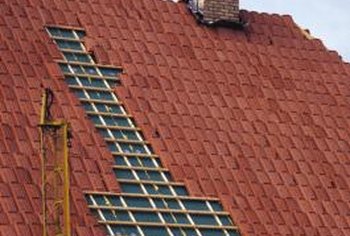- By Marketing
- In Mold Removal
How to Detect a Roof Leak
How to Detect a Roof Leak

Roof leaks must be found before they can be repaired.
A roof leak in any real estate property can make even the best properties unsellable. They are difficult to locate; many times where the roof leaks is not where the actual problem is. Structural damage occurs over time if a roof leak is not found and repaired, and ceilings and walls may become discolored and moldy. Detecting and repairing a roof leak is paramount for any home listed on the market to prevent damage and to keep the property in a sell-able state.
- Determine if there is a roof leak. Look for mold or mildew in attics or on walls. Look for discoloration on ceiling tiles or drywall. Look for wet, moist and rotting wood in crawl spaces, around chimneys or other additions, such as skylights and vents.
- Water down the roof with fresh water from either buckets or a hose. This is called a flood test. When the roof becomes saturated, it will begin to leak.
- Add a pigment to the water, like food coloring or dye. A bright color like red will be easy to trace and see. The water will carry this pigment through the leaking area and it will act like a beacon to show you the precise point where the water is coming in.
- Check the attic for dyed areas. Follow the dye path from where it begins to where it comes out to find the leak. There may be multiple points of entry, so if you find one point, continue to search thoroughly until you are satisfied that there are no more leaks.
Things You Will Need
- Bucket(s) of water, or hose
- Red food coloring (dye)
Tip
- Most roof leaks occur at flashing points around an addition on a roof. Vents, chimneys, places where different angles of roof meet, are all place where a roof might leak.
http://homeguides.sfgate.com/detect-roof-leak-24707.html
